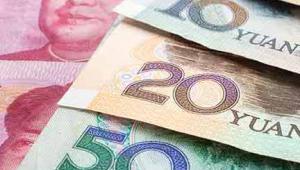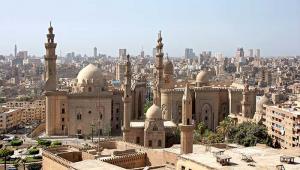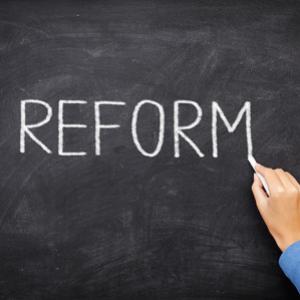By the Ernst & Young Editorial team | 17 September 2013
EU Commissioner for Development, Andris Piebalgs, tells us why development spending remains crucial — even at a time of austerity.
As the world’s largest donor of official development assistance, the EU has a critical role to play in improving the lives of millions of people around the world. Greater precision and a willingness to take calculated risks is what’s driving the approach, says EU Commissioner Andris Piebalgs. Here, he tells EY’s Daina Belicka and Jan Grauls about his role and plans for the future
It’s pretty rare to find EU Commissioner for Development Andris Piebalgs in Brussels. Not for him a life behind a desk, instead he is more often to be found out and about in developing countries, visiting EU projects and programs around the world and seeing for himself their impact on the ground. Such experiences have helped shape his view about what works and what doesn’t work in this most challenging of fields, as well as development’s enduring importance — even at a time of sweeping government cutbacks elsewhere.
“There are three arguments to justify development spending,” he says. “First of all, our human nature is about solidarity with the poorest people. We pay taxes and this is being redistributed. The second, though sadly a negative argument, is about the potential threat an unstable world has to offer. Imagine mass migration from, for instance, sub-Saharan Africa. The final argument is that investment could result in direct or indirect profit. If Africa continues to grow, it will offer enormous opportunities for our industries. Research has shown that development cooperation from the EU could lead to a growth in Gross National Income (GNI) for sub-Saharan Africa of 2%, while for the EU leading to 0.5% extra growth in GDP.”
Defining development
EuropeAid, the European Commission's Directorate-General for Development and Cooperation, was established in January 2011. It is the result of the merger of parts of the former DirectorateGeneral for Development and Relations with African, Caribbean and Pacific States with the former EuropeAid Co-operation Office. It is responsible not only for setting the EU’s development policy for all developing countries but also for ensuring the effective programming and implementation of aid. EuropeAid’s work is carried out with the ultimate aims of reducing poverty in the world, ensuring sustainable development and promoting democracy, peace and security.
Now planning its operations under the EU’s new financial framework and budget — the first to have been cut in the EU’s 56-year history and running between 2014 and 2020 — Piebalgs
identifies two key development mechanisms, the European Development Fund (EDF) and the Development Cooperation Instrument (DCI). “Together, we have €50b for classic development
work,” he says. “It’s roughly what we had in the previous period. The main change is that we have to focus our resources more than we used to in the not-too-distant past. Changes have been made on three dimensions: a focus on least developed countries (LDCs) and low income countries (LICs), a focus on Africa and an increased sectoral focus.”
Piebalgs is keen to stress the “profound” changes that will be occurring under the DCI. “We are moving from 29% allocation of resources to LDCs and LICs to 56%,” he says. “So there will be a very strong focus on the poorest countries, where aid sometimes can make up to 25% of GNI. This is quite a substantial change.” In addition, there will be a strong focus on Africa, with 75% of the EU’s resources aimed at projects across sub-Saharan Africa. Two countries in Asia — Myanmar and Afghanistan — also stand to benefit from the EU’s programs.
Piebalgs and his colleagues are also looking to make some adjustments to the sectors in which the EU invests. “We have tried to change philosophy from doing everything but in limited
volumes, to addressing those sectors where our support could provide catalytical change,” he says. “Hence, we’ve chosen agriculture, food security and nutrition which, when taken together, account for close to 20% of invested funds.”
Money talks
A Latvian politician by background, Andris Piebalgs has occupied key positions in both national and European political fields. Between 2004 and 2009 he served as European Commissioner
for Energy, and then took up his current role in 2010. Having been privy to many closed-doors discussions in Brussels and beyond, he has firsthand experience of how policy-makers have had to adapt to the new reality of reduced spending. When asked if he thinks it was inevitable that development funding would be impacted by spending cuts, he says that it is a complex question.
“Let me start by emphasizing that EU taxpayers account for nearly 60% of worldwide Overseas Development Assistance,” he says. “We are delivering, though perhaps not at a scale which we
would like to deliver. The Commission is pushing Member States to achieve the 0.7% GNI target. The LDCs need this. The sooner we deliver, the better for the world.
“EU citizens are not negative about development aid and we’ve seen that the UK recently increased its commitments,” he continues. “This was down to political will, defending this policy against all kinds of criticism. I hope the British example will be followed by Germany and we’re hoping that peer pressure from the UK, Sweden, Denmark, Luxemburg and the Netherlands, all countries meeting or surpassing the GNI target, will lead to more countries increasing their commitments. Cuts are painful. The people will not go in the streets to demand more development aid. That’s very clear. But people always accept that you support the poorest people and if we see the level of poverty, people will have all the sympathies. We must not forget that there are a lot of people for whom aid really matters.”
To maximize the impact of such funding, the EU is making it a key priority to increasingly work in collaboration with bilateral agencies, the private sector and international finance institutions. “You can’t build economic success from taxpayers’ money alone,” he says. “Only the involvement of the private sector can contribute to lasting change. Working with other bodies and agencies can act as an enabler for the private sector. We also need private capital for job creation. There have been attempts to work with local banks, offering special programs with lower interest rates. We need the development banks to step in and they do; the World Bank is increasingly focusing on Africa.
“We also need to resolve bottlenecks and one way of stimulating the development of a financing infrastructure is to promote regional integration; creating a market in its own right
and enabling investment in more than only extractive industries,” he continues. “The development of an internal market can contribute to a healthy finance infrastructure. That’s one of
the reasons why the EU is concluding Economic Partnership Agreements, which is partially about regional integration.”
Piebalgs is also clear that there should remain a strong focus on making each penny count. “Money needs to be spent well,” he says. “Financial risk is, of course, not acceptable and this is where companies such as EY can help to track our work. External audits have to make sure the system is sound. There will always be room for improvements, but audits give you a chance to implement policies in challenging environments. A performance audit, such as those conducted by the European Court of Auditors, is sometimes painful when they’re right, but at the end of the of day we need to perform well and audits can act as a catalyst for better performance.”
Ushering in a new chapter
Since July 2012, Piebalgs has combined his EU responsibilities with serving as a member of the UN High Level Panel on the post-Millennium Development Goals (MDGs) agenda beyond 2015. The eight MDGs — which range from halving extreme poverty to halting the spread of HIV and AIDS and providing universal primary education — have been a milestone in global and national development efforts. National consultations on a post-2015 development agenda are under way in more than 70 countries. The United Nations Development Group has organized a set of 11 thematic consultations on issues such as education, environmental sustainability and inequalities.
“The post-2015 MDG process is embarking on a complex journey,” says Piebalgs. “Initially, I thought we should continue with the MDGs and combat extreme poverty. However, there’s a bigger ambition, and that is putting job creation and equality on the table. Environmental sustainability has been part of this journey. Progress can be fast, even one year ago, green growth as a terminology was not accepted, but now it is generally accepted and is no longer the same as slow growth. The World Bank has shown an enormous shift in its stance on climate change, which is the real global issue, because other issues can be dealt with at regional or country level. Thus far, the High Level Panel report has been well received and I hope it will be implemented as well in the national policies.”
Going forward, Piebalgs believes that development professionals need to move out of their comfort zone in order to deliver lasting change. “Development aid is increasingly about calculated risks,” he says. “The tolerance for risks needs to become higher. Not all projects will be successful. Budget support remains effective for fragile states, to strengthen the state, but budget support can’t make a difference for the more stable countries. Countries don’t need budget support, but development. We need to invest in sectors such as water, sanitation, energy and agriculture, though some development banks have trouble investing in agriculture for instance, due to the high-risk perception. In a way, access to finance for farmers is riskier for a development bank compared to building a road. But sometimes it would be better for the farmer to take a loan and develop his agricultural holding.”
Taking these types of decisions now will lead to sustainable improvements in developing countries in the near, medium- and long-term future. Certainly, Piebalgs is optimistic that a brighter era, one shaped by increased collaboration between government, multilateral agencies and the private sector, is within reach. “I would hope that by 2030 we wouldn’t need a Commissioner for Development anymore,” he says. “By 2030, extreme poverty will be very rare, it might still be prevalent in a few countries, especially land-locked countries with huge population growth or fragile states, but if responsible governments act toward the needs of their people then they can make the role Commissioner superfluous. There will still be humanitarian assistance, for tsunami-kind of disasters, but this will also be reduced. The Commissioner for Development might be an arm of external relations by then — for sure it will no longer be a full time job.”
This feature was originally published in Dynamics EY's international development magazine, in August 2013













